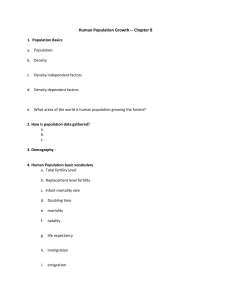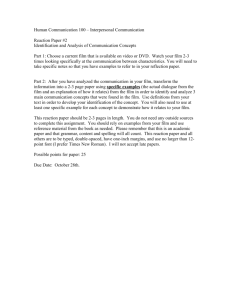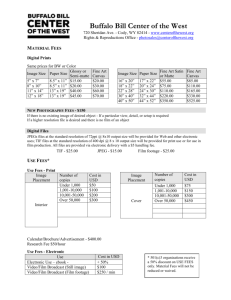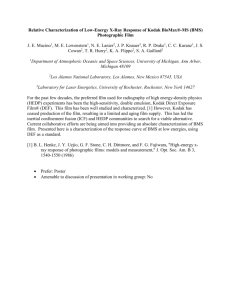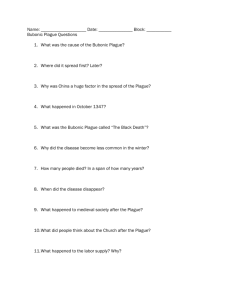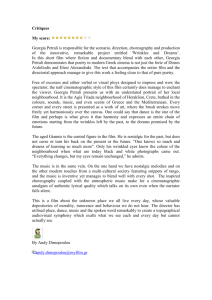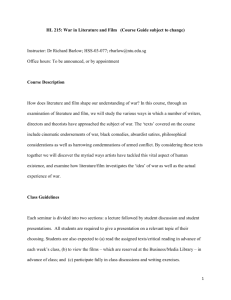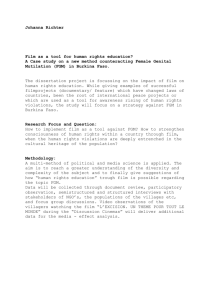Human Population Growth pp guide
advertisement
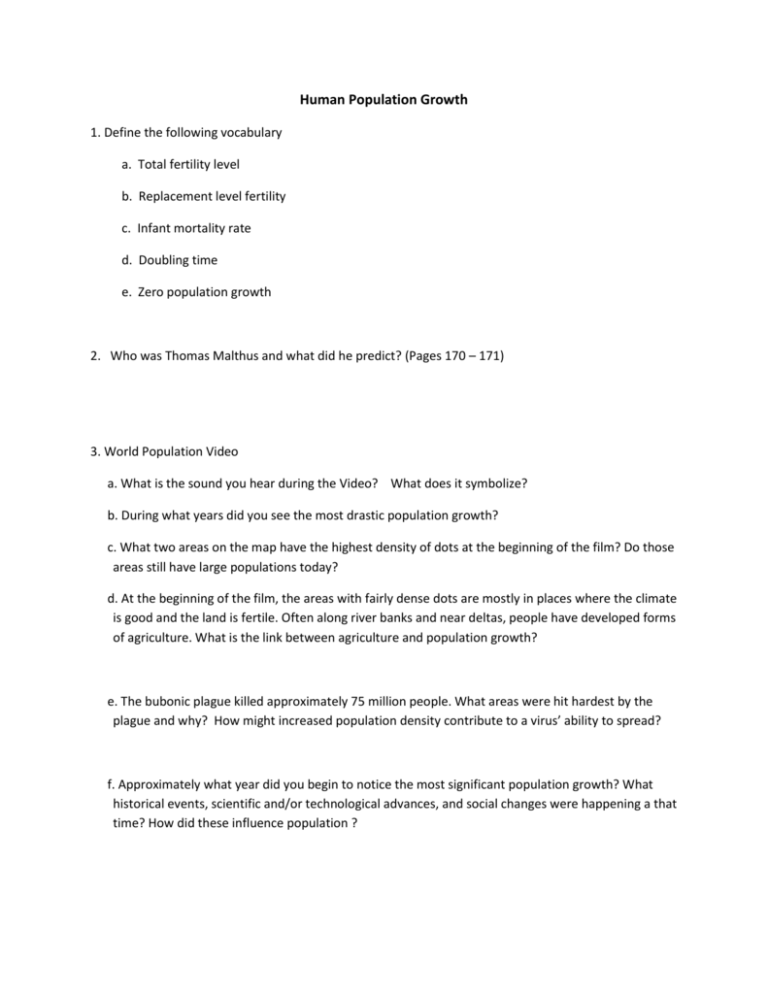
Human Population Growth 1. Define the following vocabulary a. Total fertility level b. Replacement level fertility c. Infant mortality rate d. Doubling time e. Zero population growth 2. Who was Thomas Malthus and what did he predict? (Pages 170 – 171) 3. World Population Video a. What is the sound you hear during the Video? What does it symbolize? b. During what years did you see the most drastic population growth? c. What two areas on the map have the highest density of dots at the beginning of the film? Do those areas still have large populations today? d. At the beginning of the film, the areas with fairly dense dots are mostly in places where the climate is good and the land is fertile. Often along river banks and near deltas, people have developed forms of agriculture. What is the link between agriculture and population growth? e. The bubonic plague killed approximately 75 million people. What areas were hit hardest by the plague and why? How might increased population density contribute to a virus’ ability to spread? f. Approximately what year did you begin to notice the most significant population growth? What historical events, scientific and/or technological advances, and social changes were happening a that time? How did these influence population ? g. At the end of the film, were there any areas that remained relatively unpopulated? Why might this be? h. If current growth rates continue, our population would double to almost 14 billion in 58 years. However, the United Nations estimates that would population will plateau at 9 – 10 billion around the middle of the 21st century. What changes could occur between now and 2050 to reduce the rate of growth? i. Knowing we are currently adding one billion people to the planet roughly every 12 years, approximately how many people are we then adding every year? How many every month? 4. What is the world population today? 5. What is the U.S. population today? 6. What is the formula for finding the growth rate of a country? 7. What is the rule of 70? Let’s practice: A country’s growth rate is 1.5%. How many years will it take that country’s population to double? 8. How do population pyramids help us learn about population? ? ? Which represents a developed country? A developing country? 9. Developed vs. Developing Countries Read page 173 and make a chart of characteristics comparing developing(LED) and developed countries (MED). 10. Demographic Transition a. What is it? b. Draw and label the four stages. c. Identify the characteristics of each stage
